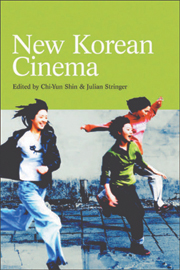Introduction
Published online by Cambridge University Press: 05 August 2013
Summary
South Korean cinema is finding its place in the sun. At the dawn of the new millennium, the growing enthusiasm for Korean movies around the world is evidenced by intense activity on multiple fronts. Titles as varied as Chihwaseon (Chiwihwasŏn, 2002), Oasis (Oasisŭ, 2002) and Old Boy (Oldŭ poyi, 2003) are winning prizes at major international film festivals. Others – including Friend (Ch'in'gu, 1999), Spring, Summer, Fall, Winter … and Spring (Pom, yŏrŭm, kyŏ ul … kŭrigo pom, 2003), and The Way Home (Chip ŭro …, 2001) – are opening hearts and purses in markets across Asia, Europe and North America. With hundreds more films circulating in subtitled versions on multi-region DVD and inexpensive VCD, Korean movie fandom is on the rise just about everywhere. Hollywood executives are also sitting up and taking notice. Stories concerning Korean cinema published in trade papers such as Variety reveal just why and how US studios are so eagerly gobbling up remake rights to domestic hits like My Sassy Girl (Yŏpki chŏk-in kŭnyŏ, 2001) and A Tale of Two Sisters (Changhwa wa Horgryŏn, 2003).
- Type
- Chapter
- Information
- New Korean Cinema , pp. 1 - 12Publisher: Edinburgh University PressPrint publication year: 2005



